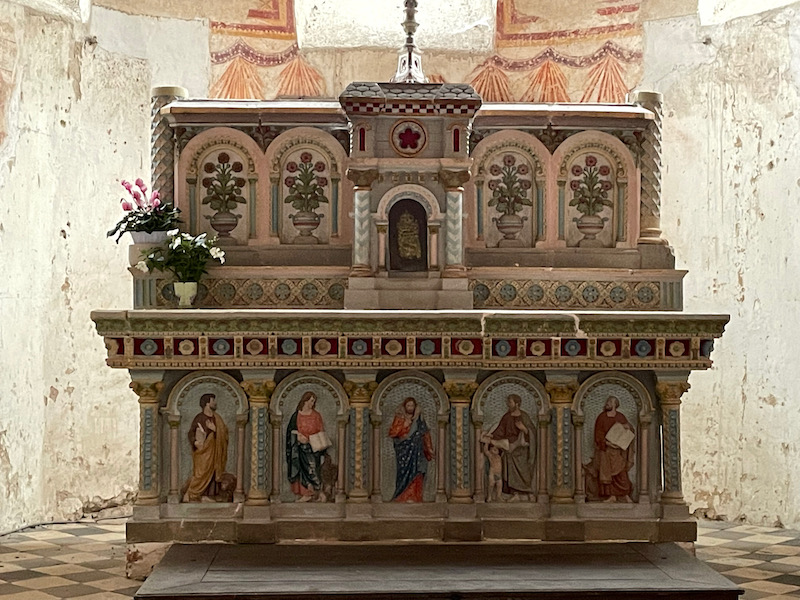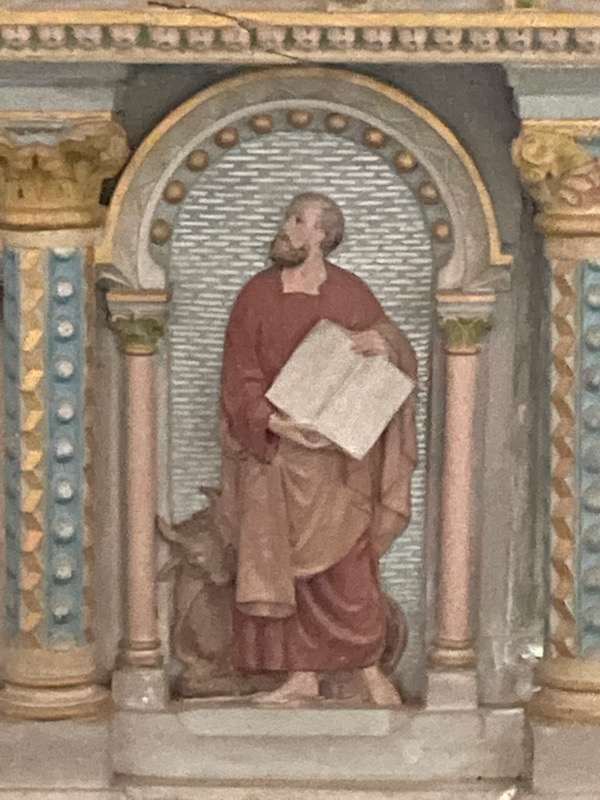Our Blog - Loire Valley Trip - Lavardin, France
We started our morning at the village of Lavardin, one of the Plus Beaux Villages in France. A Gothic bridge spans the Loir to access this village nestled at the foot of a now-in-ruins fortified castle which withstood the onslaught of Richard the Lionhearted only to later be taken by the troops of Henri IV.
Here you can see the Gothic bridge, with the remains of the castle perched above it.
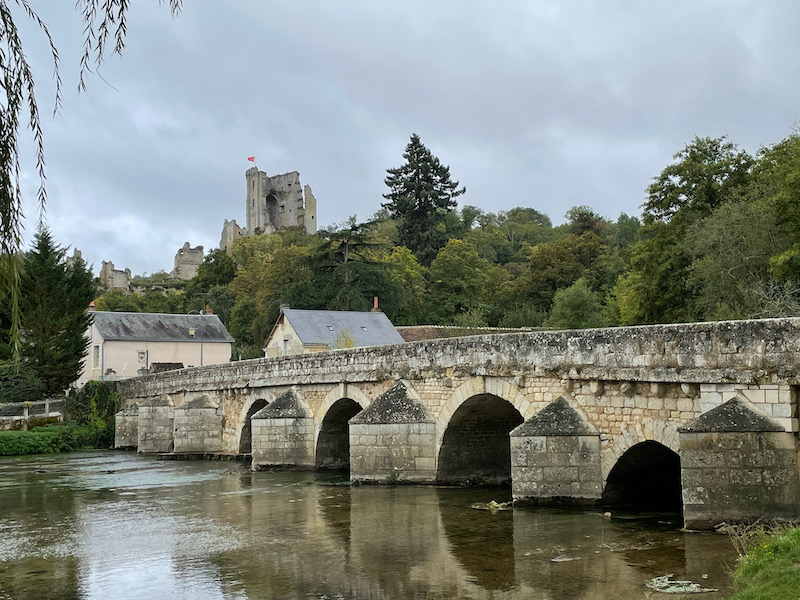
The Château de Lavardin dates back to the 11th century, built by the first lords of Lavardin. It was the main fortress of the Count of Vendôme from 1130. During the war between Henry II of England and Philippe Auguste, Richard the Lionhearted came to lay siege to the Château in 1188. The King of France came to lend a hand to the militias of Montoire and Lavardin who joined forces and forced the English troops to lift the siege. Modifications were made to the castle in the 14th and 15th centuries before being taken by the members of the Catholic League in 1589, then dismantled the following year on the orders of King Henri IV.
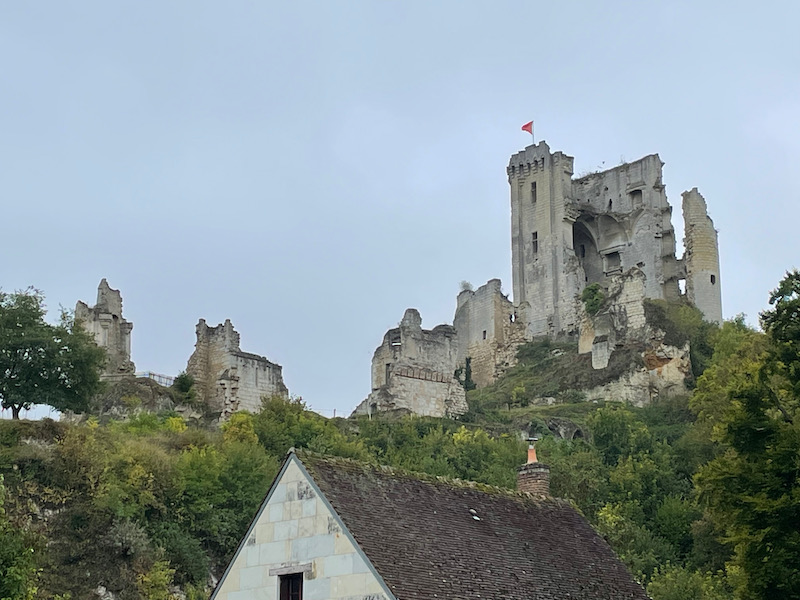
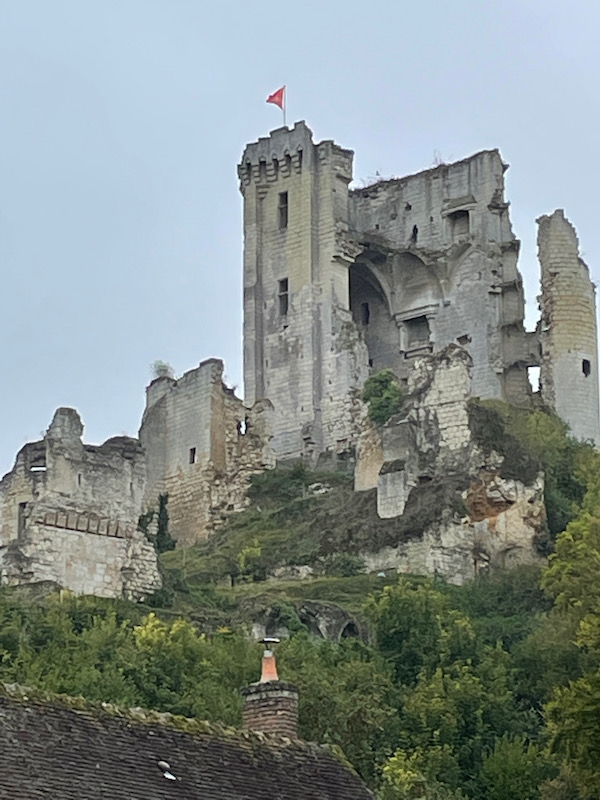
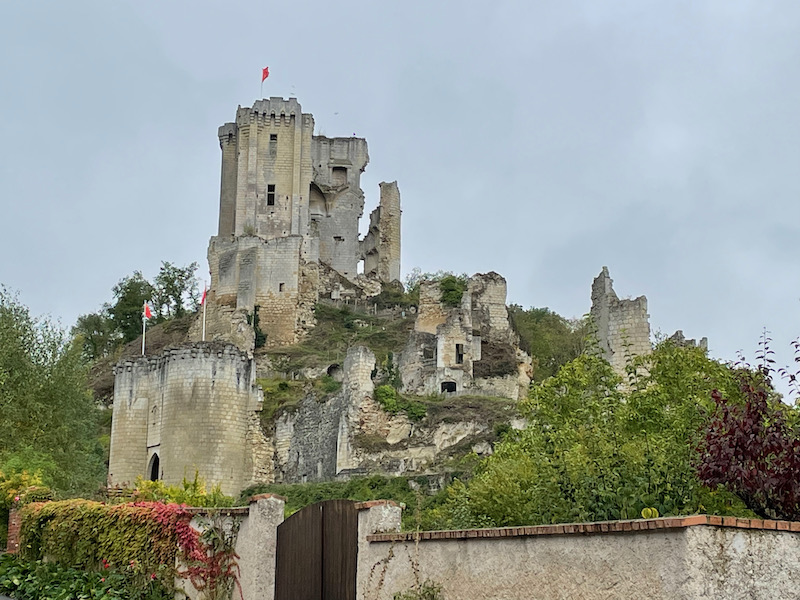
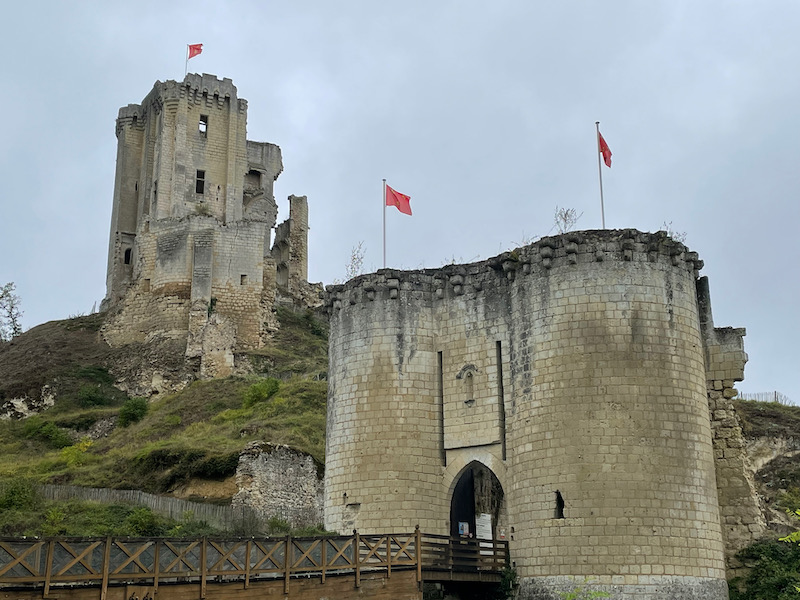
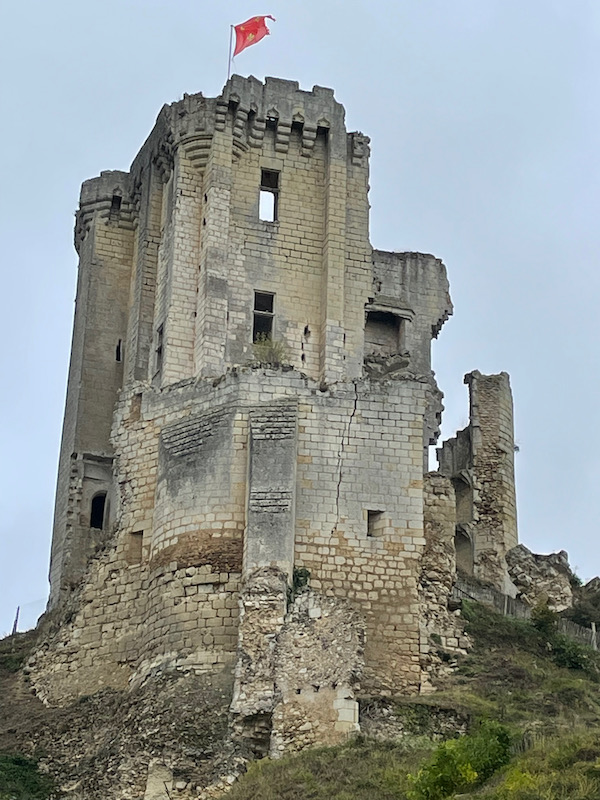
We didn't go in to look around because dogs weren't allowed. Initially, we were a little shocked .... why wouldn't dogs be allowed in a set of ruins? Then we saw the two goats ....
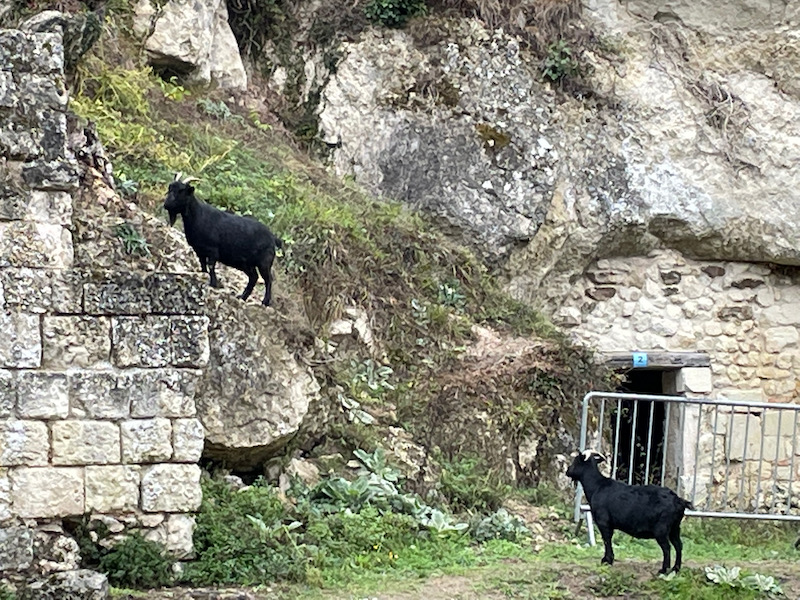
In a little tiny museum in town, there is a photo of a model of what the castle previously looked like. On the far side, at the top, is the keep, which is the majority of what you see today, along with the twin towered gate on the model in the middle-left. The Saint Genest church can be seen at the bottom.
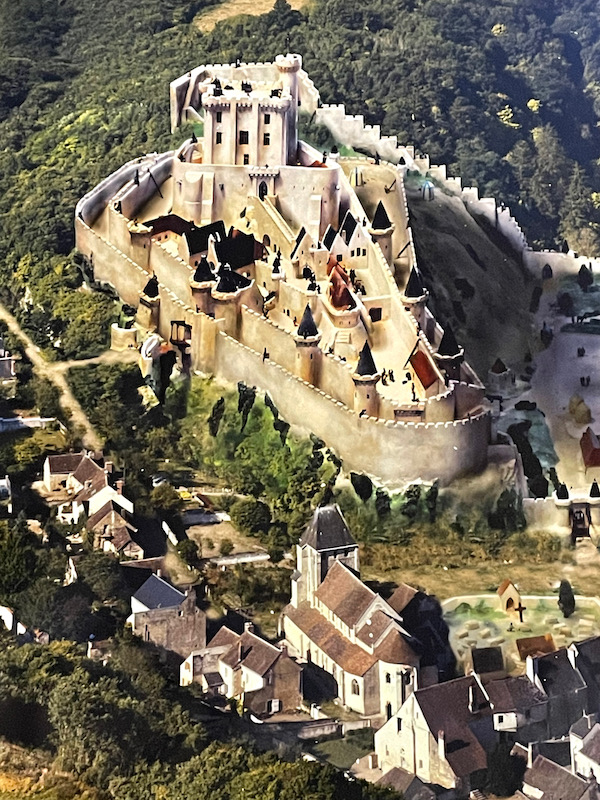
The only other thing in town is the Church of St Genest, a Romanesque church from the end of the 11th century.
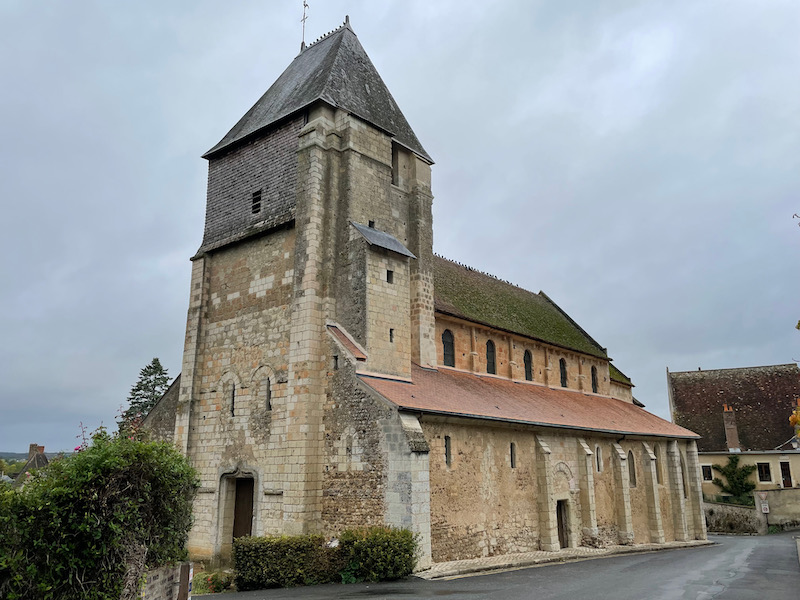
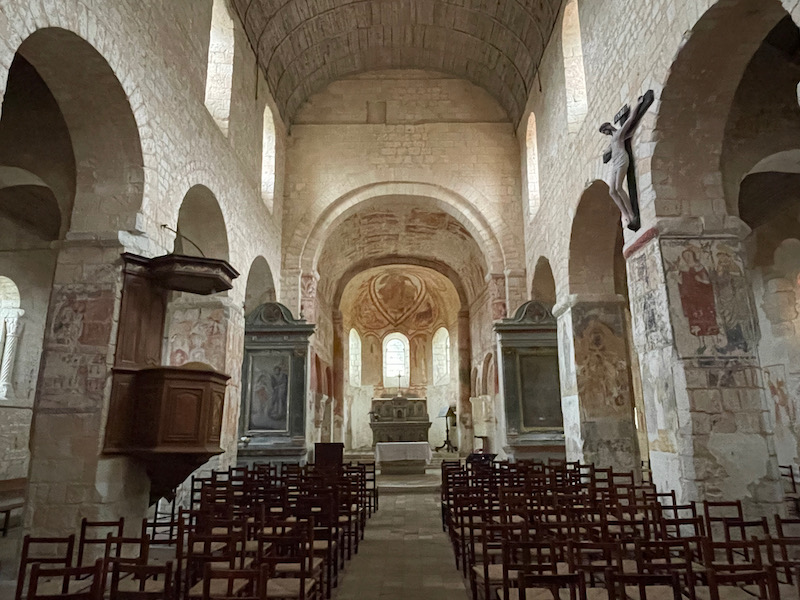
In the picture above, you can start seeing the colors on the walls, which are frescoes dating from the 12th to the 15th century that were hidden under a lime plaster for centuries. The church actually had REALLY good information that described each and every fresco!!! Kudos!! I'll touch on just a couple ...
My first one was at the back of the church on one of the square pillars. The pillar frescoes are from the 15th century, and this one shows Saint Ambrose, the Bishop of Milan.
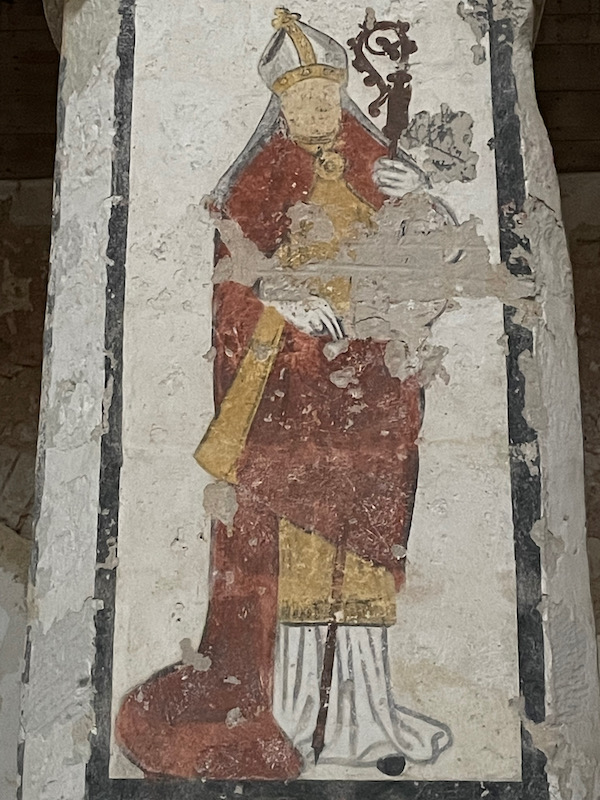
I think that this large fresco, which is just before the apse of the church, shows the washing of the feet, with the Apostles waiting their turn. The wall murals are mostly from the 12th century.
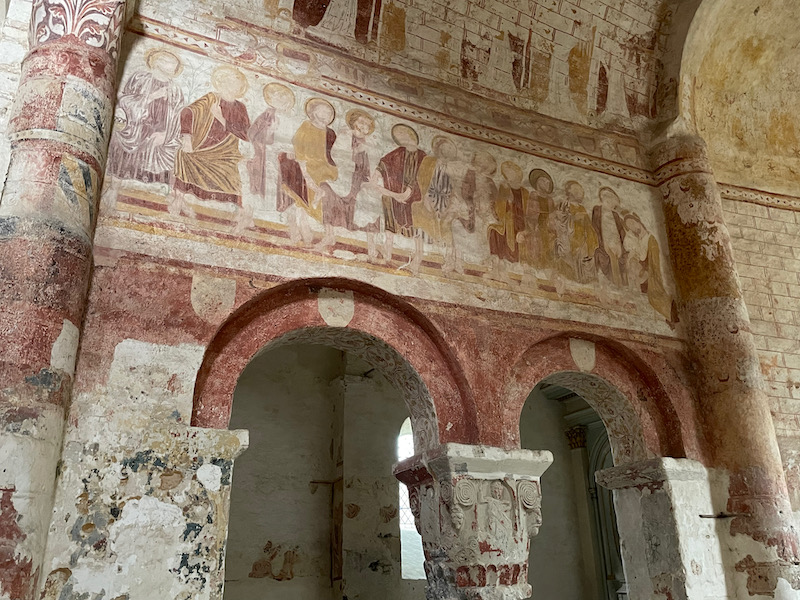
This 12th century fresco is over the altar of the church and you can make out the shape of the medallion in the first interior picture that looks up the nave. This is Christ within the mandorla (the almond-shaped motif), with symbols of the 4 Evangalists surrounding him: The lion of St Mark (bottom left) and the bull of Saint Luke (bottom right). I am not sure if the upper-right is the angel of Saint Matthew or the eagle of St. John ... the other one (upper-left) is pretty much missing.
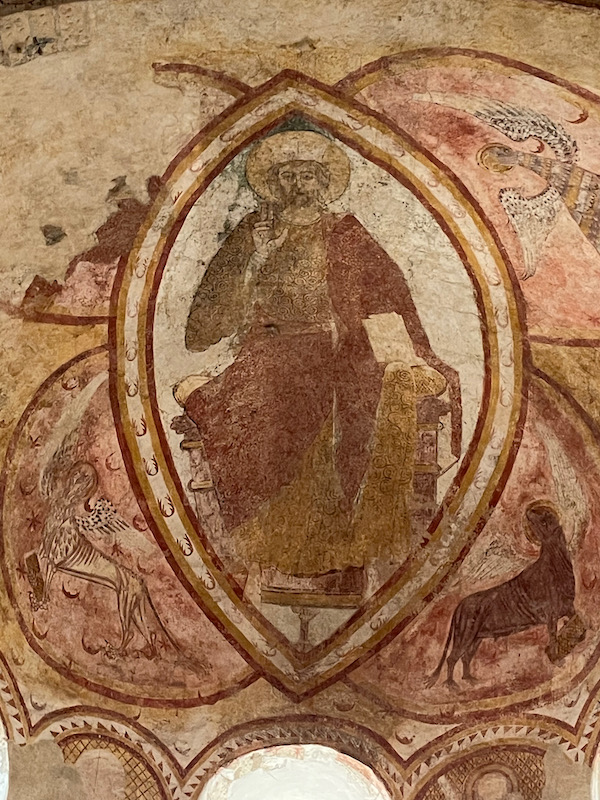
This one is a bit "odd" ... It is a very large multi-fresco story where Saint Michael is weighing souls to see who goes into heaven and who, well, doesn't. This is the part of those who didn't ... the brown devil with protruding eyes and a belt of red flames is pushing the condemned towards another devil, shown in the 2nd picture with a bel of yellow flames. He catches them and throws them into hello, symbolized by a large cauldron with flames underneath (3rd picture). You can see the pained faces of those in the black cauldron.
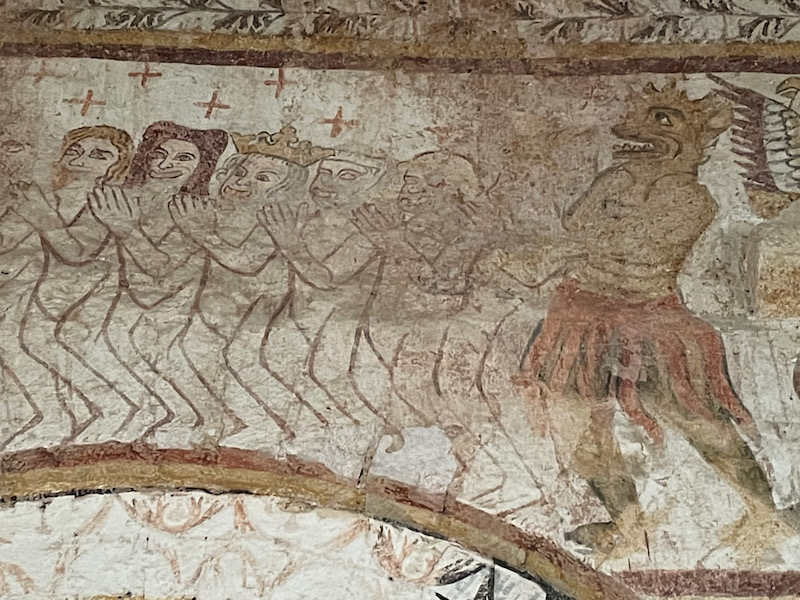
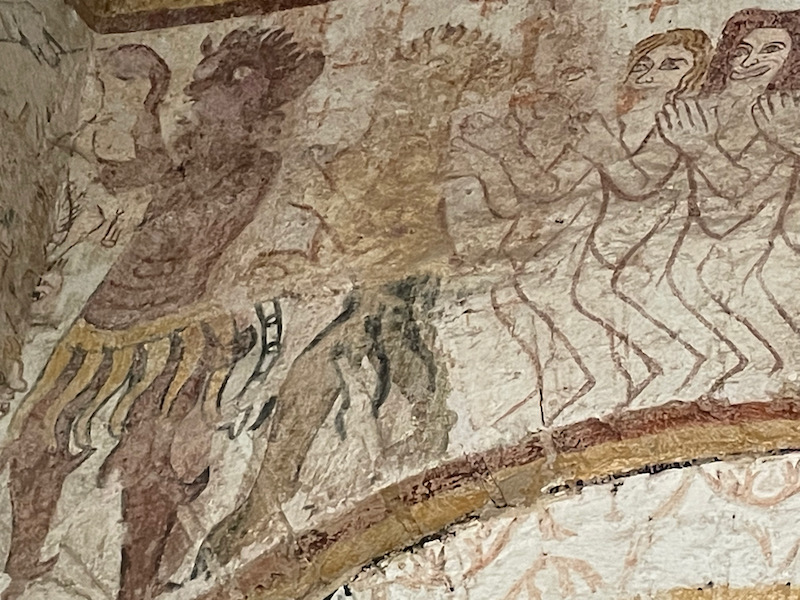
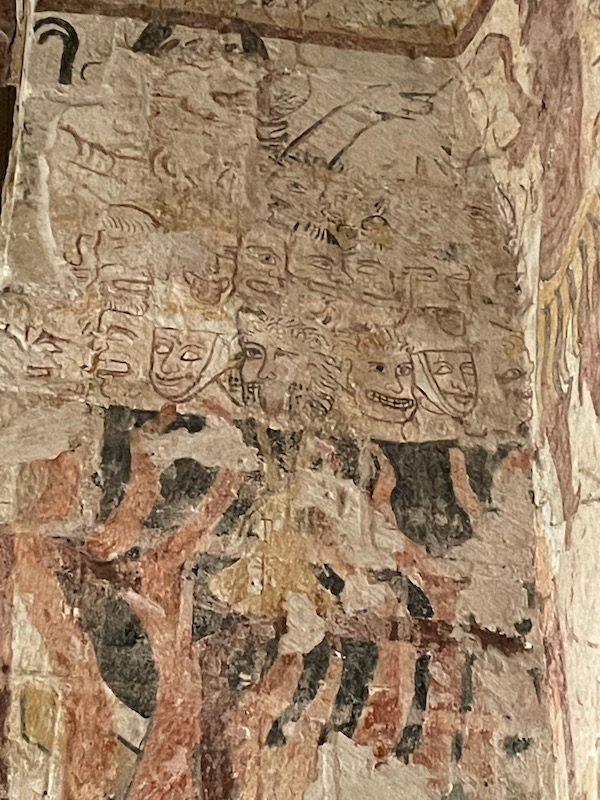
And to end this blog ... the colorful altarpiece.
